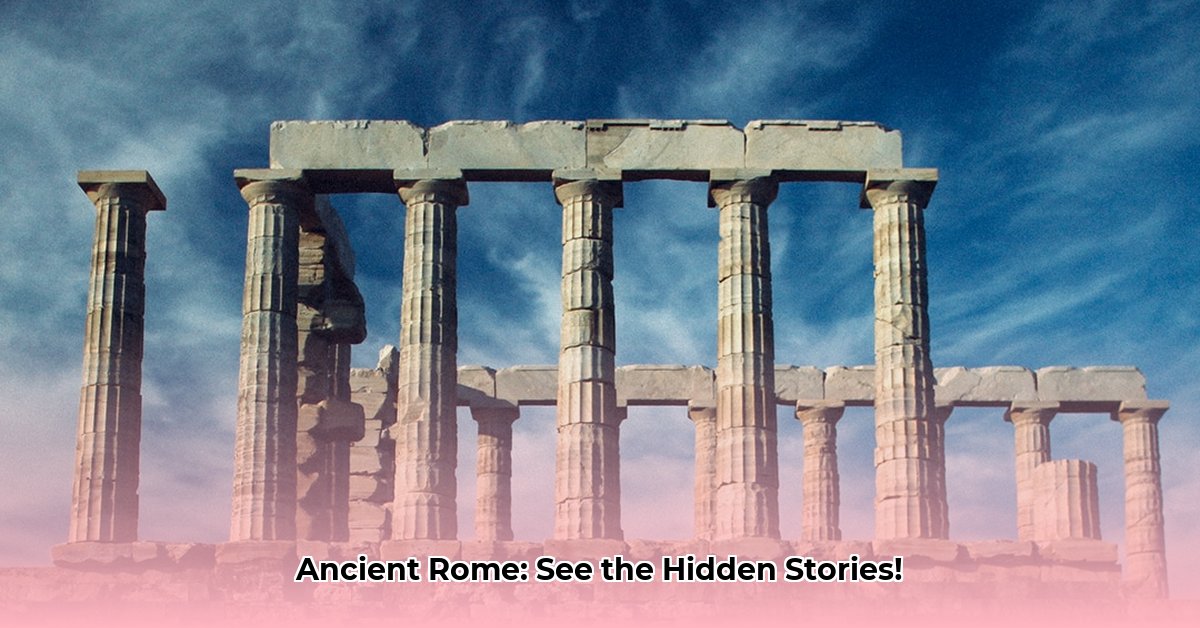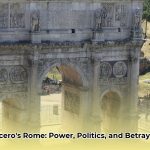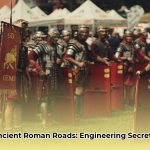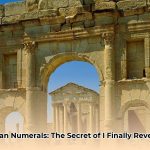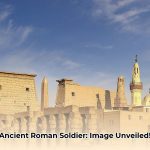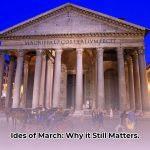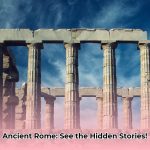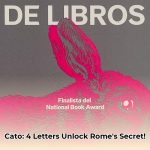When the name “Rome” echoes, do you instantly picture gladiators battling in the majestic Colosseum or emperors draped in flowing togas? While these iconic scenes are etched into our collective memory, a deeper exploration of pictures from ancient Rome offers a profound dive beyond mere cinematic stereotypes. To see more, explore these ancient Rome pics that tell their story. This visual odyssey isn’t merely a historical tour; it’s an immersive journey into a civilization whose indelible fingerprints are undeniably etched across modern legal systems, groundbreaking engineering marvels, and even the very fabric of our everyday language. Understanding Rome through its visual legacy allows us to grasp the enduring power of its innovations and the hidden stories that shaped our world.
Ancient Rome’s sweeping influence, extending fundamentally beyond its most prominent landmarks, profoundly shapes contemporary legal systems, engineering practices, and daily life. Rome’s immense power was meticulously built upon a sophisticated blend of evolving political structures, transitioning from its foundational Republic to its vast Empire. This was coupled with unparalleled military engineering and a complex, highly adaptable legal framework. Furthermore, even seemingly “peaceful” eras like the Pax Romana were carefully maintained through underlying military strength and profound cultural beliefs, prompting a nuanced look at simplified historical narratives and inviting us to truly see the complexities of their world.
Unveiling the Enduring Power and Hidden Stories Through Roman Imagery
Delving into pictures from ancient Rome helps us move beyond common, often simplified, perceptions of the empire. These images provide invaluable insights into a vibrant, complex society marked by groundbreaking ideas, intense political struggles, and a legacy that powerfully resonates today. The crucial question is: how do we interpret these visual records to truly comprehend the dynamic realities of life in antiquity?
Laying the Foundation: The Roman Republic in Focus
The Roman Republic, established around 509 BCE, laid the critical groundwork for all subsequent Roman developments. Examining pictures from ancient Rome from this nascent period reveals the very emergence of the Roman Forum (the central public square) and the initial shaping of their unique political system. How do visible remnants of early public buildings and official seals illuminate the perpetual power struggles between the affluent patricians and the common plebeians? Images depicting figures such as Cincinnatus, who famously left his farm to lead the army in a crisis, or the inscribed bronze tablets known as the Twelve Tables (Rome’s first codified laws), underscore the paramount importance placed on civic duty and the establishment of a foundational legal framework. Early portrait busts, often stark and realistic, reflect a Roman emphasis on civic virtue and ancestry.
A Visual Tale of Rise and Fall: The Emperors Through Their Portraits
The momentous transition from Republic to Empire marked a pivotal turning point in Roman history. Portraits of Julius Caesar, notably those on coins, convey a palpable sense of his ambition and military genius. His assassination, frequently dramatized in historical paintings and reliefs, foreshadows the period of instability that followed. Subsequently, Augustus strategically used carefully chosen pictures from ancient Rome, particularly his magnificent Prima Porta statue, to propagate the concept of the “Pax Romana” (Roman Peace) – an era often associated with widespread peace and prosperity.
Consider images of emperors like Nero, synonymous with extravagance and depicted in later art with a certain debauchery, or Constantine, whose reign saw Christianity become the official state religion, visually symbolized by his adoption of the Chi-Rho symbol. Through these artistic representations—from imperial coinage to grand monumental arches—how can we discern the distinct characteristics of their rule, from one’s decadent excesses to another’s profound religious transformation and its impact on the visible landscape of the empire?
Everyday Life: Beyond the Grand Monuments in Visual Detail
While the grandeur of the Colosseum or the architectural brilliance of the Pantheon are captivating, exploring the daily lives of ordinary Roman citizens offers a more intimate perspective. Pictures from ancient Rome depicting typical homes (insulae for apartments, domus for villas), bustling marketplaces, and communal public baths are exceptionally informative. They provide a humanizing glimpse into the routines, challenges, and simple pleasures faced by everyday people, moving beyond the narrative of Rome as solely a military powerhouse.
Mosaics and vibrant frescoes (wall paintings) offer fascinating insights into Roman clothing, dietary habits, forms of entertainment like chariot races or theatrical performances, and even their religious practices, which collectively help bring history vividly to life. Historians frequently infer details about social status from the elaborate decor found in Roman homes, with more intricate mosaics and detailed frescoes often indicating significant wealth and cultural sophistication.
Military Prowess: A Visual Record of Conquest and Innovation
The Roman military was an unparalleled force, boasting organizational efficiency that enabled rapid troop movements, a quantifiable advantage. Maps illustrating the vast expansion of the Roman Empire, alongside detailed depictions of legions marching to war, powerfully convey their relentless ambition. How did the Roman army’s groundbreaking innovations, such as standardized equipment (the lorica segmentata armor, the gladius sword), the iconic aquila (eagle standard), and advanced engineering techniques, contribute to their remarkable conquests? Images of pivotal military campaigns, from their epic clashes with Carthage during the Punic Wars to Julius Caesar’s conquest of Gaul (modern-day France), visually encapsulate the extensive geographical reach and formidable political power they attained. The testudo formation, a turtle-like shield wall, is a prime example of their tactical ingenuity.
The Enduring Echo of Stone: Roman Architecture and Engineering
Roman architecture stands as an enduring testament to their extraordinary engineering capabilities. The revolutionary application of the arch, the dome (epitomized by the Pantheon’s oculus), and innovative concrete formulations transformed construction, enabling the erection of massive, awe-inspiring structures like the Colosseum itself. What do pictures from ancient Rome showing majestic aqueducts, meticulously constructed roads (like the Appian Way), and grand public buildings reveal about the values and societal needs prioritized by the Romans? The sheer scale and durability of these projects speak volumes about their communal ambition and technical mastery.
These architectural masterpieces, which are dispersed throughout Europe, North Africa, and the Middle East, serve as powerful symbols of Roman ingenuity and their lasting impact on global civilization. Surprisingly, some of these ancient structures, such as parts of the Pont du Gard aqueduct in France, remain in practical use today, a clear testament to the exceptional durability and foresight of Roman engineering.
The Byzantine Empire: A Roman Legacy Lives On Visually
Even following the fall of the Western Roman Empire in 476 CE, the rich tapestry of Roman traditions persisted and evolved in the East. Constantinople (modern-day Istanbul), the capital of the Byzantine Empire, became a preeminent center for art and culture, blending Roman heritage with new influences. How do pictures from ancient Rome originating from the Byzantine era, particularly magnificent mosaics found in places like Ravenna or the Hagia Sophia, showcase a unique fusion of Roman, Greek, and Eastern artistic and architectural influences? Exploring Byzantine mosaics, religious icons, and distinct architectural styles provides crucial insight into their remarkable continuation and adaptation of the Roman legacy, often with an emphasis on spiritual grandeur.
Deciphering the Visual Code
Engaging with pictures from ancient Rome, whether they illustrate magnificent architecture, decisive military victories, intimate daily scenes, or even the empire’s eventual decline, allows viewers to embark on a compelling journey into a dynamic society that continues to profoundly affect the modern world. Through the careful study of these compelling images, we can unlock a wealth of knowledge about this endlessly fascinating civilization.
| Aspect of Roman Life | Visual Examples | Insights Gained |
|---|---|---|
| Political System | Images of the Roman Forum, Senate meetings, busts of senators | Shows the importance of public debate, civic participation, and the evolving balance of power from Republic to Empire. |
| Military | Maps of Roman expansion, legionary soldiers, siege engines | Reveals the scale of Roman ambition, unparalleled military organization, innovative technology, and the impact of warfare on society. |
| Daily Life | Mosaics of banquets, scenes from public baths, frescoes of homes | Offers glimpses into Roman cuisine, fashion, entertainment, social customs, and the distinctions between public and private life. |
| Architecture | Images of aqueducts, roads, the Colosseum, Pantheon, Hadrian’s Wall | Highlights Roman engineering skills, their focus on public works and monumental grandeur, and their lasting influence on urban planning. |
| Religion | Depictions of Roman gods, early Christian symbols, temple reliefs | Provides insight into Roman polytheistic beliefs, the momentous transition to Christianity, and the pervasive role of religion in society. |
| Imperial Propaganda | Imperial portrait statues (e.g., Augustus), triumphal arches, coinage | Illustrates how emperors projected power, legitimized their rule, and disseminated specific messages throughout the empire. |
How Did Roman Law Evolve? A Visual & Conceptual Journey
While the Colosseum, aqueducts, and grand villas frequently dominate our perception of ancient Rome, understanding how did Roman law evolve reveals a sophisticated system that profoundly influences our modern world. Roman legal principles were not conceived overnight; instead, they developed through centuries of adaptation, rigorous codification, and deep philosophical reflection. Visual evidence, though less direct than architectural ruins, can still illuminate aspects of legal practice and public display of law.
From Tablets to Codices: The Genesis of Roman Law Visually
Imagine a burgeoning society attempting to govern itself solely with unwritten customs. Such a condition leads to pervasive chaos. Around 450 BCE, the Romans committed their foundational legal code to bronze tablets known as the Twelve Tables. Though no original tablets survive, artistic depictions and literary accounts show them displayed prominently in the Roman Forum, serving as the initial “terms and conditions” of Roman citizenship. This public display of law itself was a powerful visual declaration of legal transparency, albeit often limited to the literate elite. Their very existence visually underscored the move towards a more ordered society.
- Early Roman Law: Primarily focused on rigid, formalistic laws applicable only to citizens, often requiring specific verbal formulas and rituals.
- Evolutionary Interpretation: More flexible interpretations emerged as judicial officials, known as praetors, began adapting the law, often influenced by the burgeoning legal knowledge from across the Mediterranean.
The Praetors: Legal Innovators and the Ius Gentium
As Rome’s influence expanded, its legal needs grew correspondingly complex. This is where the praetors played a crucial role. These distinguished judicial officials possessed the authority to interpret and adapt existing law to address novel situations. The ius gentium (law of nations), for instance, was developed specifically to resolve legal disputes involving foreigners, reflecting Rome’s pragmatic approach to governance in a multi-cultural empire. While not directly visual, the concept of praetorian edicts—annual declarations of legal principles—represents an evolving, visible framework of justice. Praetors were not merely arbiters; they acted as genuine legal innovators, continually shaping the law to meet the evolving demands of a rapidly expanding empire.
Justinian’s Code: The Grand Synthesis and Its Legacy
Centuries later, Emperor Justinian I, reigning from Constantinople, embarked on an ambitious project to consolidate the vast and disparate body of Roman law. The monumental outcome was the Corpus Juris Civilis (Body of Civil Law), a comprehensive codification completed in the 6th century CE. While not a “picture” in the traditional sense, the very organization and meticulous compilation of this text—often depicted in later illuminated manuscripts—preserved Roman legal principles for future generations, effectively serving as the definitive Roman legal encyclopedia whose influence is visible globally.
Public vs. Private: Two Sides of the Same Coin in Legal Thought
Roman jurists demonstrated a sophisticated understanding by clearly distinguishing between jus publicum (public law), which governed the organization and administration of the state, and jus privatum (private law), which regulated individual rights and relationships. This fundamental division, often visually represented in the distinct architecture of public forums versus private dwellings, underscores their advanced perception of law’s dual role in both state governance and facilitating daily societal interactions. A remarkably profound insight for its time, wouldn’t you agree?
Roman Law’s Enduring Legacy
Roman law did not simply vanish with the decline and fall of the Western Roman Empire. Instead, it became the bedrock for legal systems across continental Europe, forming the basis of what is known as civil law. Its enduring influence also permeated common law traditions through the adoption of various legal concepts and terminology. The core principles of Roman law continue to resonate profoundly in contemporary legal debates, from the intricacies of property rights to the complexities of contract law.
Consider this: the next time you encounter a legal phrase like “bona fide” (in good faith) or “quid pro quo” (something for something), remember the lasting influence of Roman legal thought. Its impact on subsequent legal developments is undeniable, laying down foundations that persist across continents and legal systems.
Citizenship and Legal Rights: The Constitutio Antoniniana
The Constitutio Antoniniana (Antonian Constitution), promulgated by Emperor Caracalla in 212 CE, extended Roman citizenship to virtually all free inhabitants within the empire. This decree had a transformative effect on legal rights, suddenly subjecting and protecting a significantly larger segment of the population under the full spectrum of Roman law. Images on imperial coins from this era often celebrated such universalizing decrees, even if their full implications took time to unfold.
Stakeholders in Roman Law Today
| Stakeholder | Implication on Understanding and Application |
|---|---|
| Legal Educators | Integrating Roman legal principles into introductory courses provides a foundational historical context for modern legal concepts, fostering a critical and comprehensive understanding of legal evolution. |
| Policymakers | Roman law principles concerning property rights, contracts, and governance offer valuable historical insights for informing contemporary policy decisions in economic regulatory frameworks and public administration. |
| Legal Professionals | Utilizing Roman law terminology and doctrines can significantly enhance the clarity and persuasiveness of legal arguments and interpretations in complex, nuanced cases, drawing on a rich intellectual tradition. |
| History Scholars | Continued re-examination of historical narratives surrounding the codification and influence of Roman law is crucial for refining our collective understanding and challenging long-held assumptions about legal development. |
Studying how did Roman law evolve and its practical application is paramount for all stakeholders. Its profound influence has undeniably shaped the very fabric of how policy is conceived, formulated, and implemented across the globe.
Essential Step-By-Step – Building the Roman Military Machine: A Visual Story
Roman military might was equally rooted in exceptional engineering and the valor of its legionaries. Their armies evolved continuously, integrating new technologies and tactical approaches from conquered peoples. This transformation from citizen-soldiers to a paid, professional force fundamentally reshaped Roman power. Engineering was not merely a task; it was an intrinsic and fundamental aspect of their military culture. Spectacular siege engines and robust infrastructure played decisive roles in Roman military victories, all visually documented through reliefs, coins, and maps.
Engineering: The Foundation of Conquest
Imagine every Roman soldier equipped with a shovel. This wasn’t merely for digging latrines; it symbolized that engineering was absolutely central to Roman military operations. Roman legions possessed the capability to construct fully fortified camps (castra, temporary military encampments) in a matter of mere hours, a feat often depicted in historical illustrations. Yet, their engineering prowess extended far beyond basic encampment construction.
Consider Julius Caesar’s legendary bridge across the Rhine River, a marvel constructed in an astonishing ten days. This feat served not only as a crucial strategic asset for troop movement, but also as an undeniable demonstration of overwhelming Roman power. What psychological message did such an audacious construction send to the Germanic tribes on the opposite bank? Its swift, imposing presence was a visual declaration of Roman technical superiority.
Extraordinary Engineering Feats in Visual Record
Roman military engineering encompassed a range of ambitious and awe-inspiring projects, many of which can be “seen” today through archeological remains and artistic renditions:
- The Circumvallation of Alesia: This was an engineering marvel, featuring a double-walled defensive and offensive structure extending over 20 kilometers (approximately 12.4 miles). Its successful construction trapped Vercingetorix’s Gallic forces, a complex logistical triumph often illustrated in detailed historical maps and diagrams.
- The Ramp at Masada: A testament to their relentless commitment, this massive siege ramp was built by legionaries over several months, eventually allowing them to breach the seemingly impregnable Jewish fortress. The enduring ruins of this ramp vividly demonstrate Roman determination and engineering might.
The Romans consistently demonstrated an unwavering resolve to overcome seemingly insurmountable challenges through sheer engineering brilliance. The colossal scale of these projects itself was a visual deterrent.
Siege Warfare Masters: Tools of Domination
The Romans dramatically advanced the art of siege warfare, techniques often illustrated in historical reliefs like those on Trajan’s Column. They not only adopted but significantly improved the designs of formidable siege engines, including:
- The Ballista: A large, powerful crossbow-like weapon used to hurl massive projectiles, often heavy darts or stones, capable of piercing defenses.
- The Onager: A type of catapult that used torsion power to launch large stones, particularly effective against enemy fortifications.
- The Battering Ram: A heavy beam, often with a reinforced, metal-clad head, used to break down walls or gates, sometimes protected by a movable shed.
These sophisticated machines proved instrumental in breaching enemy fortifications and securing Roman dominance over their adversaries. The visual impact of these massive war machines approaching a besieged city must have been terrifying.
From Citizen Soldiers to Professionals: A Changing Image
Initially, Rome’s army comprised a citizen militia, where landowners served for civic duty. However, the transformative reforms enacted by Gaius Marius fundamentally reshaped it into a paid, professional force. This shift, occurring in the late 2nd century BCE, led to the standardization of equipment and rigorous training, which significantly enhanced overall military effectiveness. The visual uniformity of the legionary, often depicted in marching formations, became a powerful symbol of Roman discipline and strength.
This pivotal transformation also brought several key developments:
- Enhanced Tactical Flexibility: The integration of non-Roman auxiliary cavalry (Equitatus) greatly diversified and strengthened Roman tactical options, allowing for specialized roles in battle and visually expanding the diversity of Roman forces.
- The Rise of the Roman Navy: A formidable naval force rapidly evolved, particularly during the critical Punic Wars, becoming indispensable for controlling vast maritime trade routes and projecting power across the Mediterranean, their ships a visible extension of Roman reach.
Cracks in the Armor? Visual Signs of Decline
The later Roman Empire confronted significant trials. An increasing reliance on mercenary forces and a gradual decline in the rigorous standards of legionary training fostered critical vulnerabilities, sometimes visible in the less uniform equipment or training depicted in later art. Internal political instability, coupled with relentless barbarian invasions, became increasingly problematic. Did these cumulative factors contribute substantially to Rome’s eventual decline? This complex interplay of internal and external pressures is certainly a key piece of the historical puzzle, with its effects often subtly reflected in changing artistic styles and military depictions.
Despite these growing challenges, the Roman military’s engineering legacy persists as a testament to its ingenuity. Its strategic innovations remain an undeniable testament to its immense and lasting impact on global military history, forever preserved in the stones and images left behind.
Expert Insights – Understanding the Pax Romana Through Its Artifacts
The Pax Romana (Roman Peace), initiated by Augustus, is often idealized as a golden age of stability and prosperity. Extensive infrastructure, including a vast network of roads and aqueducts, flourished during this period. Artistic and literary endeavors thrived under sustained imperial patronage. However, a powerful, highly organized military was fundamentally essential for maintaining this “peace.” The actual “peacefulness” of the era is subject to scholarly debate due to ongoing military actions and expansion. Roman expansion during this time is interpreted differently: as either strategic defense or unbridled imperial ambition. The concept of harmony with the gods (pax deorum) played a crucial role in legitimizing Roman imperial rule. Military strategy evolved from aggressive expansion to a greater focus on border protection and consolidation. Historical sources, such as the writings of Tacitus, provide critical counter-narratives to the idealized view of the Pax Romana.
The Myth of Peace: A Closer Look at the Visual Narrative
When we conjure images of ancient Rome, the Colosseum often dominates our thoughts – but there’s a far richer narrative beneath the surface, especially concerning the Pax Romana. To truly grasp the essence of Roman power, its periods of prosperity, and the complexities of daily life, we must look beyond these celebrated landmarks. The Pax Romana, frequently portrayed as a time of serene tranquility, necessitates a much deeper, more nuanced examination. But was it genuinely peaceful in the modern sense? The answer, as historical analysis often reveals, is quite complex, a complexity sometimes visible in the contrast between grand public monuments and the realities of military control.
Foundations of a “Peaceful” Empire: Visualizing Stability
The Pax Romana (literally, “Roman Peace”) officially began with Augustus Caesar, Rome’s first emperor. This era is generally characterized as a remarkable 200-year period of unprecedented imperial stability and widespread prosperity. Aqueducts gracefully spanned vast landscapes, an intricate network of roads connected distant territories, and both arts and literature flourished under sustained patronage. These achievements are not just abstract concepts; they are visually tangible across the former empire. The Ara Pacis (Altar of Augustan Peace) in Rome is a prime visual example of Augustus’s attempt to project an image of a bountiful, harmonious new era.
However, this period of apparent calm was not a miraculous occurrence. Its foundations were, in fact, rooted in a more formidable and often darker reality. Understanding the [Expert Insights – Understanding the Pax Romana] requires acknowledging that this celebrated era was fundamentally underpinned by immense military might, whose presence was a constant, visible reminder. A highly disciplined, professional army, vigilant and ever-present, was instrumental in maintaining order across the vast empire. Consider it peace achieved and preserved through strength, executed in the distinctive Roman style. The peace, therefore, was in many significant ways, enforced.
The Military Underpinning: An Ever-Present Force
Rome’s formidable military was far from a ceremonial display; it served as the absolute backbone of the entire imperial operation. Continuous military campaigns, although sometimes conducted far from the Italian heartland, were crucial for maintaining stability and securing vital resources. These campaigns, often depicted in detailed triumphal reliefs on structures like Trajan’s Column or the Arch of Titus, show the ongoing, active nature of Roman military power even during periods of “peace”. Expansion was not solely about conquest; it was equally about securing essential resources and establishing defensible borders for the growing empire. How else could such widespread prosperity be sustained across diverse territories?
Some historians interpret this expansion as a strategic defense mechanism, safeguarding Roman interests. Others view it as unambiguous imperial ambition. The truth likely resides in a complex blend of both motivations, visually expressed in the dynamic push and pull of frontier maps. This was not a peaceful empire in the contemporary understanding of the term. It was a dominant superpower, expertly maintaining its supremacy through a combination of force and diplomacy.
The Role of Roman Culture and Beliefs: Visualizing Pax Deorum
It is also crucial to grasp the profound importance of pax deorum (harmony with the gods). Romans sincerely believed their success and continued prosperity were directly contingent upon maintaining this divine harmony. Constructing grand temples, meticulously performing religious rituals, and ensuring the gods were appeased were all considered vital for legitimizing imperial rule and fostering widespread acceptance. The numerous temples, altars, and public religious ceremonies were highly visible manifestations of this belief system. [Expert Insights – Understanding the Pax Romana] necessarily include comprehending this deeply ingrained religious dimension of Roman life.
Roman military tactics themselves evolved during the Pax Romana. While initially focused on aggressive territorial expansion, imperial strategy gradually shifted towards consolidating existing power and fortifying established borders. Impressive fortifications, such as the formidable Hadrian’s Wall in Britannia, stand as enduring testaments to this strategic change, visibly defining the limits of Roman power.
Think of it akin to managing a flourishing garden. One doesn’t just plant flowers; one must also diligently weed, prune, and protect it from pests. Rome’s military functioned as that meticulous gardener, ensuring the vast empire continued to thrive, its unseen strength constantly maintaining the visible beauty.
Questioning the Narrative: Counter-Narratives in Text and Art
Not all contemporary observers uncritically accepted the idealized portrayal of the Pax Romana. Prominent writers like Tacitus offered a more critical and nuanced perspective, directly challenging the official state narrative of unending peace and prosperity. His compelling writings vividly highlight the often-overlooked costs of empire, the suppression of dissent, and the moral compromises frequently required to maintain such immense power. While not providing “pictures,” Tacitus’s prose paints vivid, often darker, mental images that contrast with imperial propaganda.
Tacitus’s work serves as a powerful reminder that historical narratives are rarely simple or monolithic. History is richly layered with nuances, contradictions, and alternative viewpoints. He urges us not to accept official accounts at face value, but rather to delve deeper, question inherent assumptions, and critically consider diverse perspectives. This critical approach can enhance our understanding of history significantly, helping us to “read” between the lines of the visible past.
The Reality Behind the Art
Thus, the next time you encounter images of the majestic Roman Forum or the imposing Colosseum, remember the deeper realities that lie beneath their grand surfaces. [Expert Insights – Understanding the Pax Romana] recommend examining the intricate political, military, and cultural mechanisms that fundamentally underpinned this pivotal era. It wasn’t solely about monumental architecture and triumphant emperors; it was equally about the intricate interplay of power, pervasive control, and the complex realities—both peaceful and enforced—of daily life within a vast and powerful empire. Was it truly a golden age for all? Ultimately, that profound determination rests with your own historical interpretation and how you view the stories these pictures from ancient Rome truly tell.
